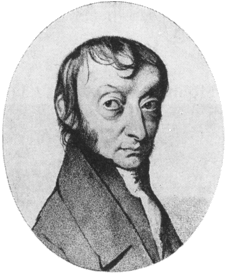The
SI (systeme international) unit for “amount of a substance”
is the mole. A mole is equal to 6.022 x 1023.
Thus, a mole of pennies would be 6.022 x 1023
pennies. This number is very large and difficult to comprehend. A
mole of soda cans would cover the surface of the earth to a depth
of over 200 miles; a mole of unpopped popcorn kernels spread across
the United States would be cover it to a depth of over 9 miles; if
you counted atoms at a rate of 10 million per second, it would take
about 2 billion years to count the atoms in one mole.
Chemicals are made up of molecules, ions and atoms. Since experimentally
there are far too many of these representative particles (atoms, ions
& molecules) to count individually, and they are too small, chemists
count moles instead.
Although
6.022 x 1023 is often called Avogadro’s
number, Amadeo Avogadro (1776-1856) never determined his number. Avogadro’s
Law, postulated in 1811, was based on the work of Joseph Louis Gay-Lussac
(whose work we will study later this year). Avogadro’s Law states
that, so long as temperature and pressure are equal, an equal volume
of any gas will contain the same number of molecules. Avogadro's Law
was ignored until 1858, when Stanislao Cannizaro proved it experimentally
by using it to determine accurate atomic weights.
|

Amadeo
Avogadro
|
Avogadro's
number can be determined experimentally by observing the actual mass
(usually via the momentum) of a "single" atom or molecule,
then comparing that to the mass of one gram-molecular-weight (or mole)
of the same substance. One mole of any element is equal to its atomic
weight in grams. For example, one mole of carbon would have a mass
of 12.011 grams.
This tutorial shows how to calculate the gram formula mass of a compound.
Gram formula mass (a.k.a. molar mass)
is defined as the atomic mass of one mole of an element, molecular
compound or ionic compound. The answer must always be written
with the unit g/mol (grams per mole). |
Calculating
a substance's gram formula mass
Calculate the gram formula mass of ammonium phosphate.
|
Description of Action |
Action |
| 1. Write the
formula for the compound. |
(NH4)3PO4 |
| 2. Determine
how many of each atom are in the compound. If there is a number outside
the parenthesis, multiply each subscript by this number. If there
is no subscript, assume it is one. |
N: 3
H:12
P: 1
O:4
|
| 3. Multiply
the number of atoms by its atomic weight. (Every teacher is different
but my students must round the atomic weight to the tenth’s
place. |
N: 3 x 14.0
= 42.0
H:12 x 1.0 = 12.0
P: 1 x 31.0 = 31.0 (31.0 is rounded from 30.97)
O:4 x 16.0 = 64.0 (16.0 is rounded from 15.99)
|
| 4. Add your
results and use the unit g/mol (grams per mole) on the end. |
42.0 + 12.0
+ 31.0 + 64.0 = 149.0 g/mol. |
|
|